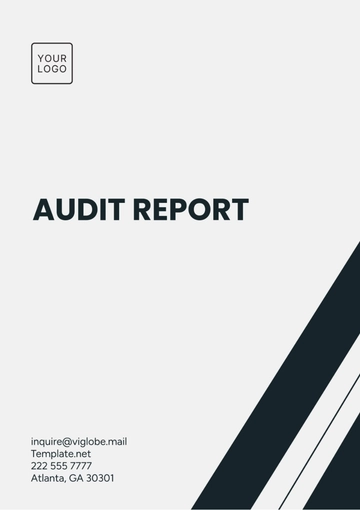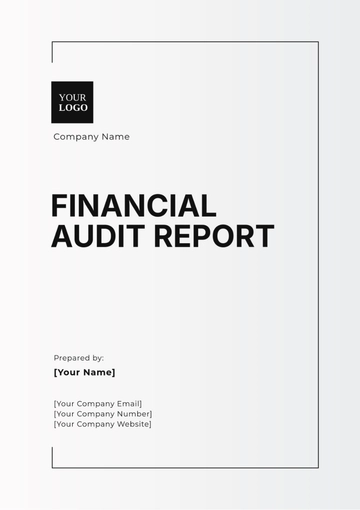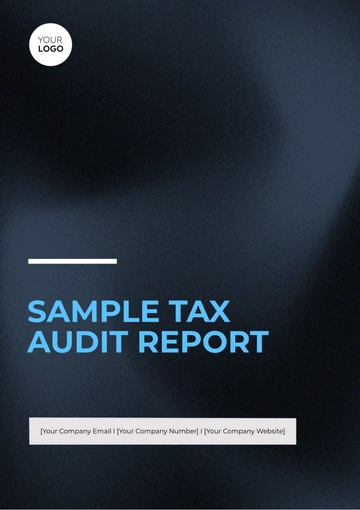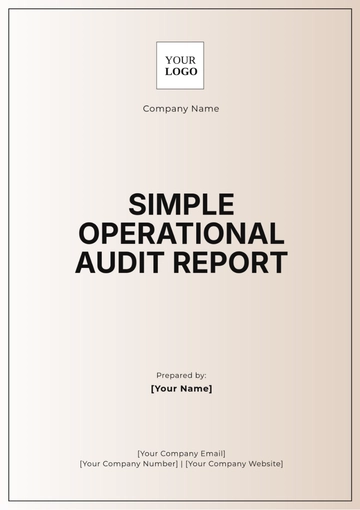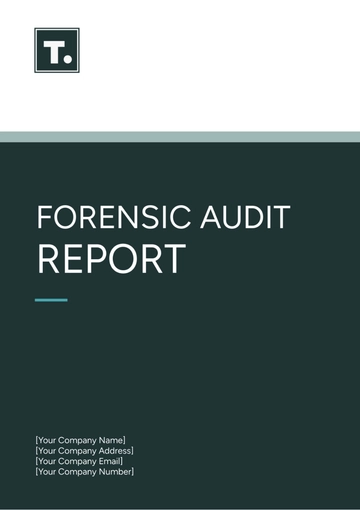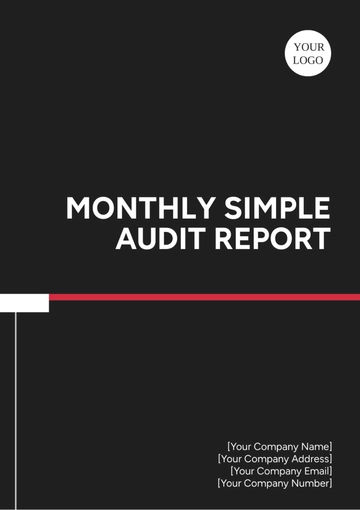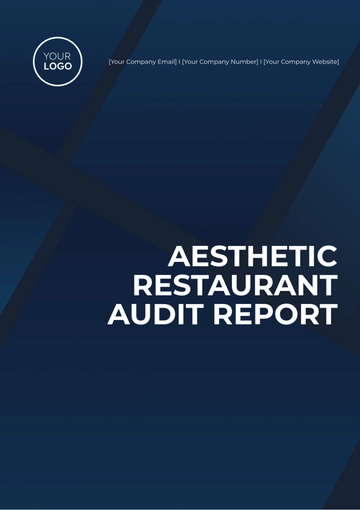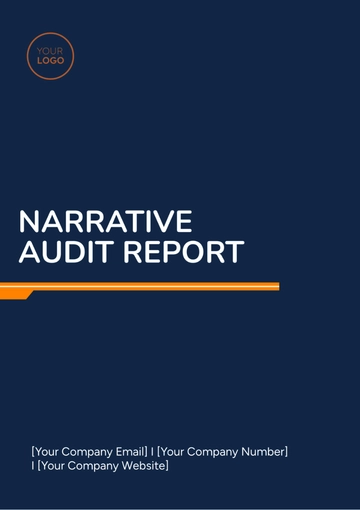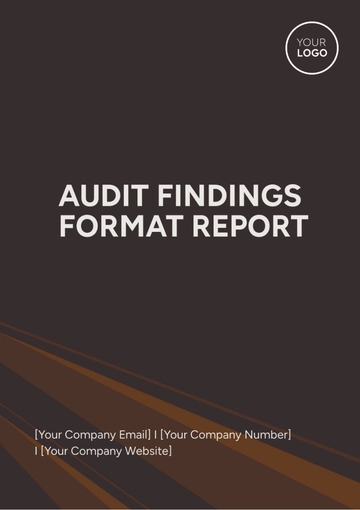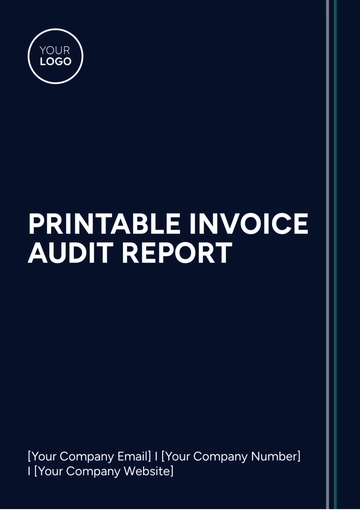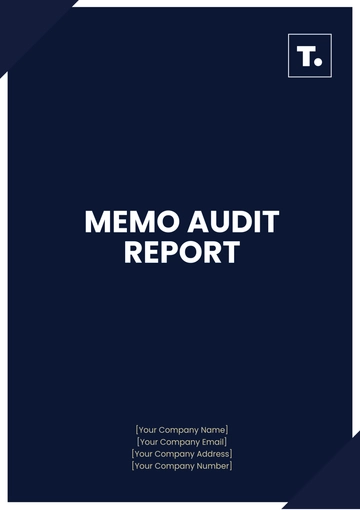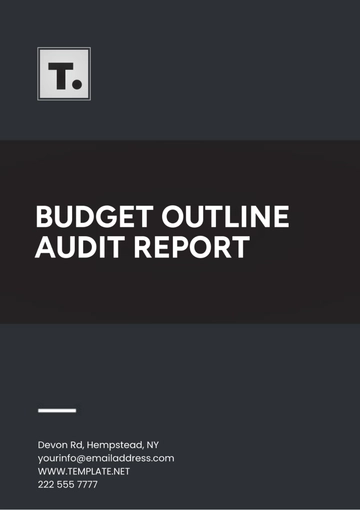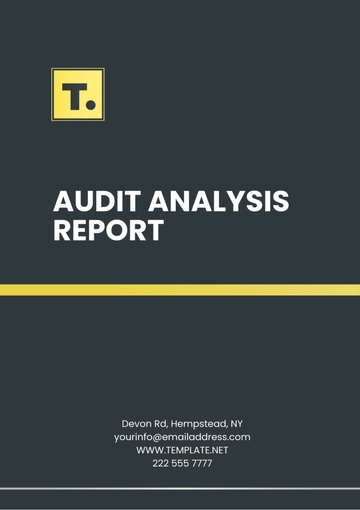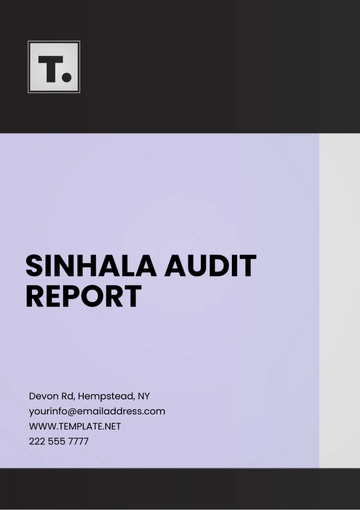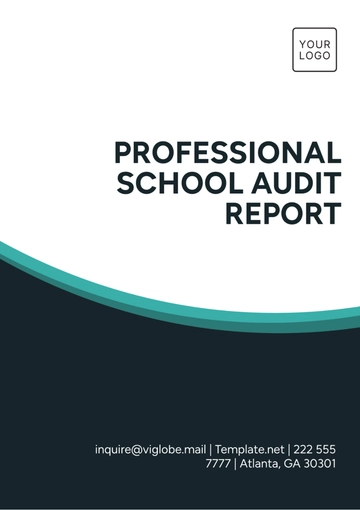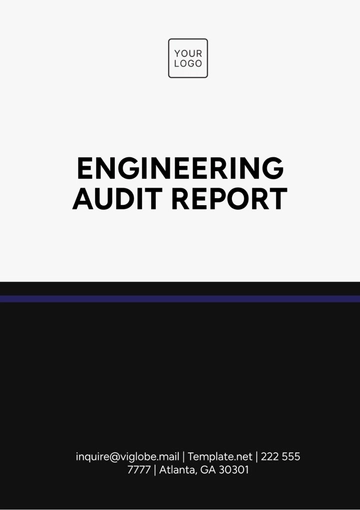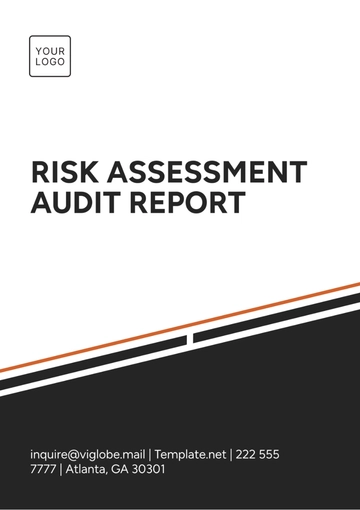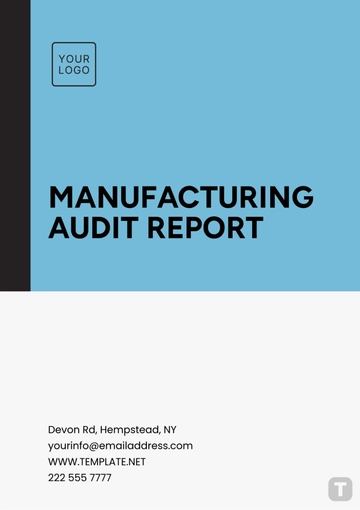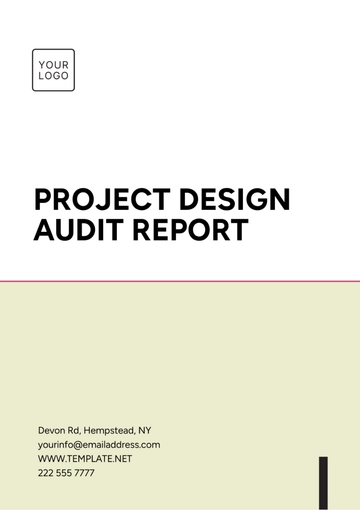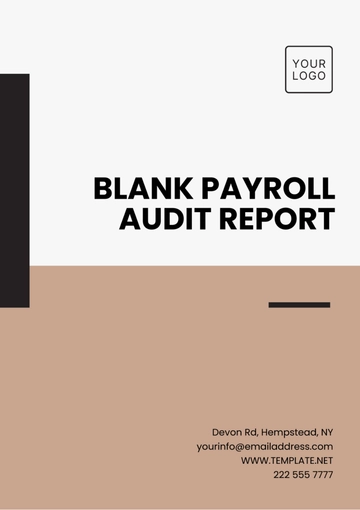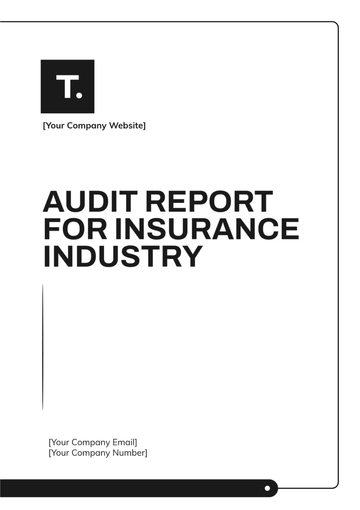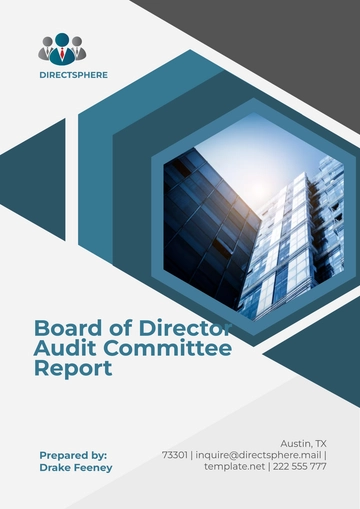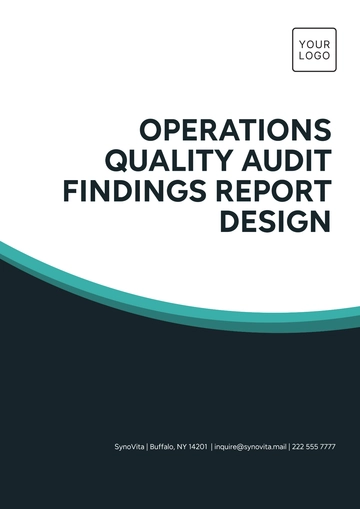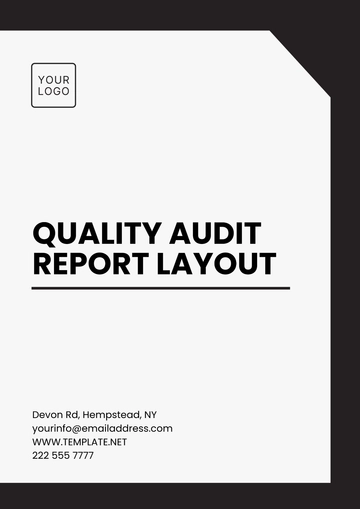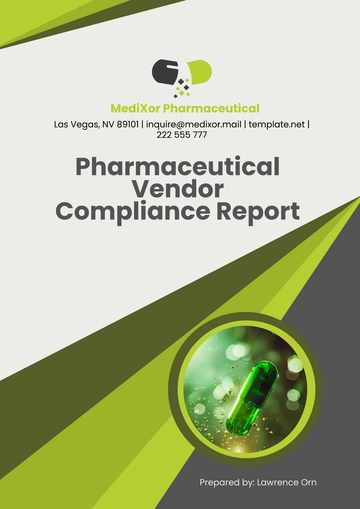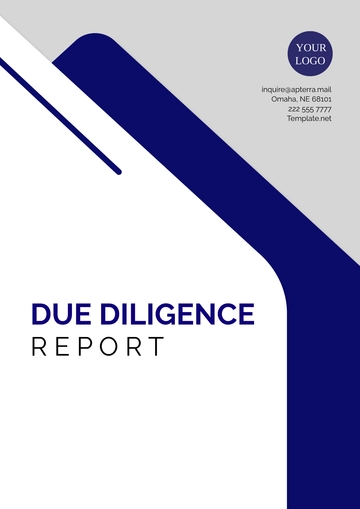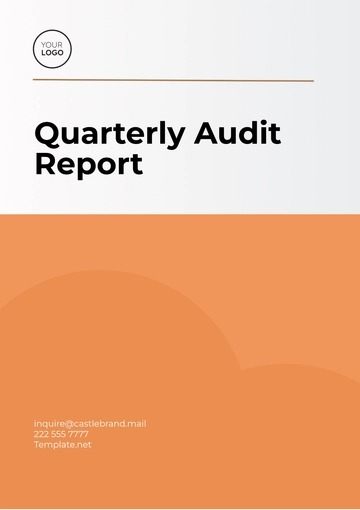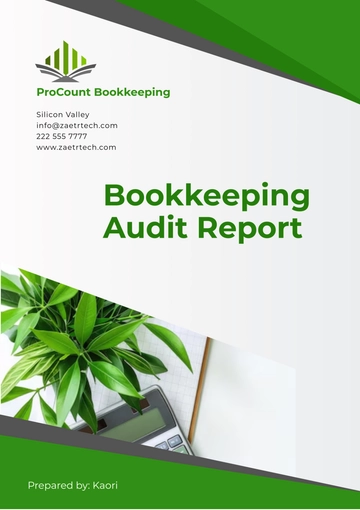Free Printable Grocery Store Audit Report

I. Introduction
A. Purpose and Scope
Purpose: The purpose of this Grocery Store Audit Report is to provide a detailed evaluation of the operational aspects of [Your Company Name] for the year 2051. The audit aims to identify areas of strength and opportunities for improvement in store operations.
Scope: This audit covers key components including cleanliness, inventory management, customer service, and safety procedures. The scope includes all departments within the grocery store and examines both front-end and back-end operations.
B. Methodology
Data Collection: Data was collected through direct observation, staff interviews, customer feedback, and review of store records. Both quantitative and qualitative data were analyzed.
Audit Process: The audit process involved a systematic review of each operational component, benchmarking against industry standards, and identifying any discrepancies or areas for improvement.
Evaluation Criteria: Criteria for evaluation included cleanliness standards, accuracy of inventory records, quality of customer service, and adherence to safety protocols. Each area was rated on a scale of 1 to 10, with 10 being the highest standard.
II. Cleanliness
A. Store Interior
The following table presents the audit findings related to the cleanliness of the store interior:
No. | Cleanliness Aspect | Rating (1-10) | Comments |
|---|---|---|---|
1 | Floors | 8 | Generally clean, occasional minor spills |
2 | Shelves | 7 | Dust present on some shelves |
3 | Restrooms | 9 | Very clean, well-maintained |
4 | Checkout Areas | 8 | Clean, minor clutter at times |
Average Rating | 8 |
Floors: The floors received a rating of 8, indicating they are generally clean with occasional minor spills. Regular cleaning schedules are maintained, but there is room for improvement in addressing spills promptly.
Shelves: Shelves were rated 7 due to dust present on some shelves. While the majority of shelves are clean, periodic dusting needs to be more consistent to maintain a higher standard.
Restrooms: Restrooms received a high rating of 9, reflecting excellent cleanliness and maintenance. This is a strong point for the store, contributing positively to customer satisfaction.
Checkout Areas: Checkout areas were rated 8, showing they are clean with minor clutter at times. Ensuring checkout areas are kept free of clutter can enhance the overall customer experience.
Overall, the store interior maintains a high level of cleanliness with an average rating of 8. Continued focus on regular cleaning schedules and immediate attention to spills and dusting can help achieve even higher standards.
B. Store Exterior
Parking Lot: The parking lot was found to be generally clean with occasional litter. Regular sweeps and trash collection are recommended to maintain a tidy appearance.
Entrance: The store entrance is well-maintained and inviting. Clear signage and clean entrance areas contribute to a positive first impression for customers.
Outdoor Signage: Outdoor signage is clean and visible, though some signs showed minor wear. Regular maintenance and replacement of worn signs will enhance the store’s exterior appeal.
Waste Disposal Areas: Waste disposal areas are managed well, but occasional overflow was noted. Ensuring regular waste collection schedules can prevent overflow and maintain cleanliness.
Overall, the store exterior is well-maintained, providing a welcoming environment for customers. Regular maintenance and attention to detail can further improve the store’s exterior cleanliness.
III. Inventory Management
A. Stock Levels
The following table presents the audit findings related to inventory management and stock levels:
No. | Inventory Aspect | Rating (1-10) | Comments |
|---|---|---|---|
1 | Stock Availability | 9 | High availability, occasional out-of-stock |
2 | Inventory Accuracy | 8 | Generally accurate, minor discrepancies |
3 | Shelf Organization | 7 | Mostly organized, some items misplaced |
4 | Expired Products | 9 | Very few expired products found |
Average Rating | 8.25 |
Stock Availability: Stock availability received a high rating of 9, indicating that most products are in stock with only occasional out-of-stock items. This high availability ensures customers can find what they need.
Inventory Accuracy: Inventory accuracy was rated 8, showing that records are generally accurate with minor discrepancies. Regular inventory checks and reconciliation can further improve accuracy.
Shelf Organization: Shelf organization was rated 7, reflecting that while most shelves are well-organized, some items are misplaced. Regular shelf audits can help maintain organization and ease of shopping for customers.
Expired Products: The presence of expired products was minimal, earning a rating of 9. This demonstrates effective stock rotation and vigilance in checking product expiration dates.
Overall, the inventory management system is robust, with an average rating of 8.25. Continuous improvement in shelf organization and regular inventory checks can enhance the overall efficiency and accuracy of inventory management.
B. Inventory Turnover
Turnover Rate: The turnover rate is high, indicating efficient inventory management and strong sales. This minimizes the risk of overstocking and reduces storage costs.
Ordering Process: The ordering process is streamlined, with automated systems in place to reorder stock based on sales data. This ensures timely replenishment of popular items.
Supplier Relationships: Strong relationships with suppliers ensure reliable delivery schedules and favorable terms. This enhances the store’s ability to maintain stock levels and respond to demand fluctuations.
Waste Reduction: Effective inventory management practices contribute to reduced waste, with minimal expired or unsellable products. This is both cost-effective and environmentally sustainable.
Overall, the inventory turnover is efficient, supporting strong sales and minimizing waste. Continued focus on maintaining supplier relationships and optimizing the ordering process can sustain this efficiency.
IV. Customer Service
A. Customer Interaction
The following table presents the audit findings related to customer service:
No. | Customer Service Aspect | Rating (1-10) | Comments |
|---|---|---|---|
1 | Staff Courtesy | 9 | Very courteous and helpful staff |
2 | Responsiveness | 8 | Prompt response to customer inquiries |
3 | Problem Resolution | 7 | Effective resolution, occasional delays |
4 | Checkout Efficiency | 8 | Generally efficient, minor delays at peak |
Average Rating | 8 |
Staff Courtesy: Staff courtesy was rated 9, indicating that employees are very courteous and helpful. This high level of customer service is a significant strength for the store.
Responsiveness: Responsiveness to customer inquiries was rated 8, showing prompt attention to customer needs. Enhancing training on customer service can help maintain and improve this responsiveness.
Problem Resolution: Problem resolution received a rating of 7, reflecting effective handling of customer issues with occasional delays. Streamlining the resolution process can reduce delays and improve customer satisfaction.
Checkout Efficiency: Checkout efficiency was rated 8, indicating generally efficient service with minor delays during peak times. Adding more checkout lanes or self-service options during busy periods can alleviate these delays.
Overall, customer service is strong with an average rating of 8. Continued training and process improvements can further enhance the customer experience.
B. Customer Feedback
Feedback Collection: The store has an effective system for collecting customer feedback through surveys and suggestion boxes. Regularly reviewing and acting on feedback can help address customer concerns and improve satisfaction.
Customer Loyalty Programs: The loyalty program is well-received, encouraging repeat business and rewarding frequent shoppers. Expanding the program with additional benefits can further boost customer retention.
Complaint Management: Complaints are managed effectively, with a dedicated team addressing issues promptly. Providing additional training on complaint resolution can enhance this process.
Customer Engagement: Engaging with customers through social media and in-store events creates a positive community presence. Regular engagement activities can build stronger customer relationships.
Overall, customer feedback mechanisms are robust, supporting continuous improvement in customer service. Regularly reviewing feedback and enhancing engagement strategies can strengthen customer loyalty and satisfaction.
V. Safety Procedures
A. Compliance and Training
The following table presents the audit findings related to safety procedures:
No. | Safety Aspect | Rating (1-10) | Comments |
|---|---|---|---|
1 | Safety Training | 8 | Comprehensive training provided |
2 | Emergency Procedures | 9 | Clear procedures, well-practiced |
3 | Hazard Management | 7 | Effective management, minor improvements |
4 | Equipment Safety | 8 | Regular checks, minor maintenance needed |
Average Rating | 8 |
Safety Training: Safety training received a rating of 8, indicating that comprehensive training is provided to staff. Regular refresher courses can help maintain high safety standards.
Emergency Procedures: Emergency procedures were rated 9, reflecting clear and well-practiced protocols. This high rating demonstrates the store’s preparedness for emergencies.
Hazard Management: Hazard management was rated 7, showing effective management with minor areas for improvement. Regular hazard assessments can identify and address potential risks.
Equipment Safety: Equipment safety received a rating of 8, indicating regular checks and maintenance. Addressing minor maintenance needs promptly can ensure continued safe operation.
Overall, safety procedures are robust with an average rating of 8. Continued focus on training and regular safety assessments can maintain and improve safety standards.
B. Incident Reporting
Reporting System: The incident reporting system is efficient, ensuring that all incidents are documented and reviewed. Regular audits of the reporting system can ensure its effectiveness.
Incident Response: The response to reported incidents is prompt and thorough, minimizing impact on operations. Continuous improvement in response protocols can enhance this aspect further.
Safety Audits: Regular safety audits are conducted to identify potential risks and areas for improvement. These audits are crucial for maintaining a safe working environment.
Employee Involvement: Employees are encouraged to report safety concerns, fostering a proactive safety culture. Enhancing employee involvement through regular safety meetings can strengthen this culture.
Overall, the incident reporting system is effective, supporting a proactive approach to safety management. Regular audits and employee involvement are key to maintaining a safe working environment.
VI. Financial Performance
A. Sales Performance
The following table presents the audit findings related to sales performance:
No. | Sales Aspect | Amount | Comments |
|---|---|---|---|
1 | Total Revenue | $5,000,000 | Strong sales performance |
2 | Cost of Goods Sold | $3,500,000 | Competitive pricing |
3 | Gross Profit | $1,500,000 | Healthy profit margin |
Net Profit | $1,500,000 |
Total Revenue: The total revenue of $5,000,000 indicates strong sales performance, reflecting high customer demand and effective sales strategies.
Cost of Goods Sold: The cost of goods sold is $3,500,000, showing competitive pricing and efficient inventory management. Maintaining cost control can further improve profitability.
Gross Profit: The gross profit of $1,500,000 demonstrates a healthy profit margin, supporting the store’s financial stability and potential for growth.
Overall, the financial performance is robust with a net profit of $1,500,000. Continued focus on sales strategies and cost management can sustain and enhance financial success.
B. Expense Management
Operating Expenses: Operating expenses are well-managed, with regular reviews to identify cost-saving opportunities. Efficient expense management supports overall profitability.
Labor Costs: Labor costs are controlled through effective scheduling and productivity measures. Continuous monitoring can ensure optimal staffing levels and cost efficiency.
Utility Costs: Utility costs are monitored and managed through energy-saving initiatives. Implementing additional energy-efficient practices can reduce costs further.
Maintenance Costs: Maintenance costs are managed through regular upkeep and preventive maintenance programs. Timely maintenance can prevent costly repairs and disruptions.
Overall, expense management is effective, supporting the store’s financial health. Regular reviews and cost-saving initiatives can enhance expense control and profitability.
VII. Regulatory Compliance
A. Health and Safety Regulations
The following table presents the audit findings related to regulatory compliance:
No. | Compliance Aspect | Rating (1-10) | Comments |
|---|---|---|---|
1 | Food Safety Standards | 9 | High compliance, minor improvements needed |
2 | Employee Safety | 8 | Good compliance, regular training required |
3 | Environmental Standards | 7 | Compliance with regulations, room for improvement |
4 | Licensing Requirements | 9 | All licenses up-to-date |
Average Rating | 8.25 |
Food Safety Standards: Food safety standards received a high rating of 9, indicating strong compliance. Regular training and adherence to best practices ensure continued compliance.
Employee Safety: Employee safety was rated 8, showing good compliance with safety regulations. Regular training sessions can help maintain high safety standards.
Environmental Standards: Environmental standards were rated 7, indicating compliance with room for improvement. Implementing additional environmentally friendly practices can enhance compliance.
Licensing Requirements: All licensing requirements are up-to-date, earning a rating of 9. This high rating demonstrates the store’s commitment to regulatory compliance.
Overall, regulatory compliance is strong with an average rating of 8.25. Continued focus on training and implementation of best practices can maintain and improve compliance standards.
B. Audits and Inspections
Internal Audits: Regular internal audits are conducted to ensure compliance with health and safety regulations. These audits are crucial for identifying and addressing potential issues.
External Inspections: External inspections by regulatory bodies confirm the store’s compliance with industry standards. Regularly preparing for these inspections can ensure continued compliance.
Documentation: All compliance-related documentation is well-maintained and up-to-date. Proper documentation supports transparency and accountability in regulatory compliance.
Employee Training: Regular training sessions for employees on compliance issues ensure that all staff members are aware of and adhere to regulations. This training is essential for maintaining high compliance standards.
Overall, audits and inspections play a critical role in ensuring regulatory compliance. Regular internal and external reviews, along with comprehensive documentation and training, support the store’s compliance efforts.
VIII. Recommendations
A. Operational Improvements
Enhanced Cleaning Schedules: Implementing more frequent cleaning schedules, especially for high-traffic areas, can improve overall store cleanliness. This will enhance customer satisfaction and maintain health standards.
Regular Inventory Audits: Conducting regular inventory audits can improve accuracy and organization, reducing the risk of discrepancies and ensuring timely stock replenishment.
Staff Training Programs: Developing ongoing staff training programs focused on customer service, safety procedures, and compliance can enhance overall operational efficiency and service quality.
B. Financial Strategies
Cost Control Measures: Implementing cost control measures, such as energy-saving initiatives and efficient expense management, can improve profitability and financial stability.
Revenue Diversification: Exploring additional revenue streams, such as online sales or specialized product offerings, can enhance revenue and attract new customers.
Investment in Technology: Investing in advanced technology for inventory management, customer service, and operational efficiency can streamline processes and improve performance.
C. Customer Service Enhancements
Loyalty Programs: Expanding the loyalty program with additional benefits and personalized offers can boost customer retention and satisfaction.
Feedback Mechanisms: Enhancing feedback mechanisms to collect and act on customer feedback regularly can address concerns promptly and improve service quality.
Engagement Activities: Organizing community engagement activities and in-store events can strengthen customer relationships and enhance the store’s community presence.
IX. Conclusion
This Grocery Store Audit Report of [Your Company Name] for the year 2051 reveals a well-managed and compliant grocery store with strong performance in key operational areas. The store maintains high standards of cleanliness, effective inventory management, and excellent customer service. Financial performance is robust, supported by efficient expense management and strong sales.
However, there are areas for improvement, including enhancing cleaning schedules, regular inventory audits, and ongoing staff training. Implementing the recommended strategies will help [Your Company Name] maintain and improve its operational standards, ensuring continued success and customer satisfaction.
- 100% Customizable, free editor
- Access 1 Million+ Templates, photo’s & graphics
- Download or share as a template
- Click and replace photos, graphics, text, backgrounds
- Resize, crop, AI write & more
- Access advanced editor
Ensure thorough and accurate audits with the Printable Grocery Store Audit Report Template! Available on Template.net, this template is editable for easy adjustments. Its customizable format allows it to fit any audit context. The AI Editor Tool simplifies the creation and management of your audit report! Get your copy now!
You may also like
- Sales Report
- Daily Report
- Project Report
- Business Report
- Weekly Report
- Incident Report
- Annual Report
- Report Layout
- Report Design
- Progress Report
- Marketing Report
- Company Report
- Monthly Report
- Audit Report
- Status Report
- School Report
- Reports Hr
- Management Report
- Project Status Report
- Handover Report
- Health And Safety Report
- Restaurant Report
- Construction Report
- Research Report
- Evaluation Report
- Investigation Report
- Employee Report
- Advertising Report
- Weekly Status Report
- Project Management Report
- Finance Report
- Service Report
- Technical Report
- Meeting Report
- Quarterly Report
- Inspection Report
- Medical Report
- Test Report
- Summary Report
- Inventory Report
- Valuation Report
- Operations Report
- Payroll Report
- Training Report
- Job Report
- Case Report
- Performance Report
- Board Report
- Internal Audit Report
- Student Report
- Monthly Management Report
- Small Business Report
- Accident Report
- Call Center Report
- Activity Report
- IT and Software Report
- Internship Report
- Visit Report
- Product Report
- Book Report
- Property Report
- Recruitment Report
- University Report
- Event Report
- SEO Report
- Conference Report
- Narrative Report
- Nursing Home Report
- Preschool Report
- Call Report
- Customer Report
- Employee Incident Report
- Accomplishment Report
- Social Media Report
- Work From Home Report
- Security Report
- Damage Report
- Quality Report
- Internal Report
- Nurse Report
- Real Estate Report
- Hotel Report
- Equipment Report
- Credit Report
- Field Report
- Non Profit Report
- Maintenance Report
- News Report
- Survey Report
- Executive Report
- Law Firm Report
- Advertising Agency Report
- Interior Design Report
- Travel Agency Report
- Stock Report
- Salon Report
- Bug Report
- Workplace Report
- Action Report
- Investor Report
- Cleaning Services Report
- Consulting Report
- Freelancer Report
- Site Visit Report
- Trip Report
- Classroom Observation Report
- Vehicle Report
- Final Report
- Software Report
